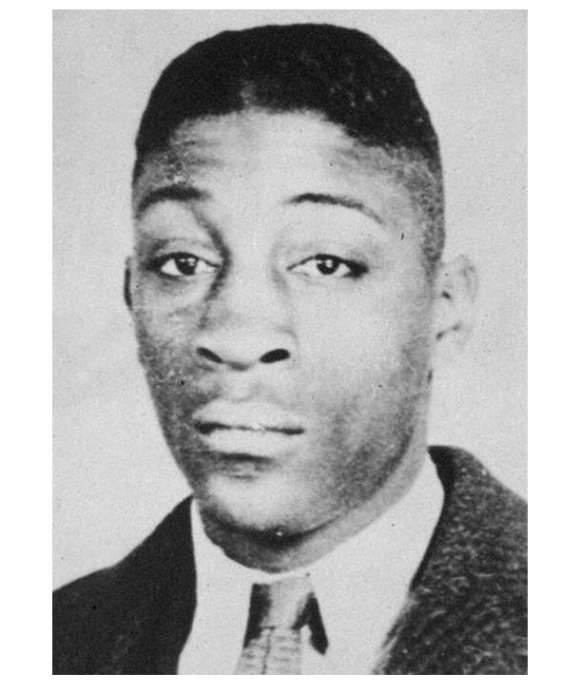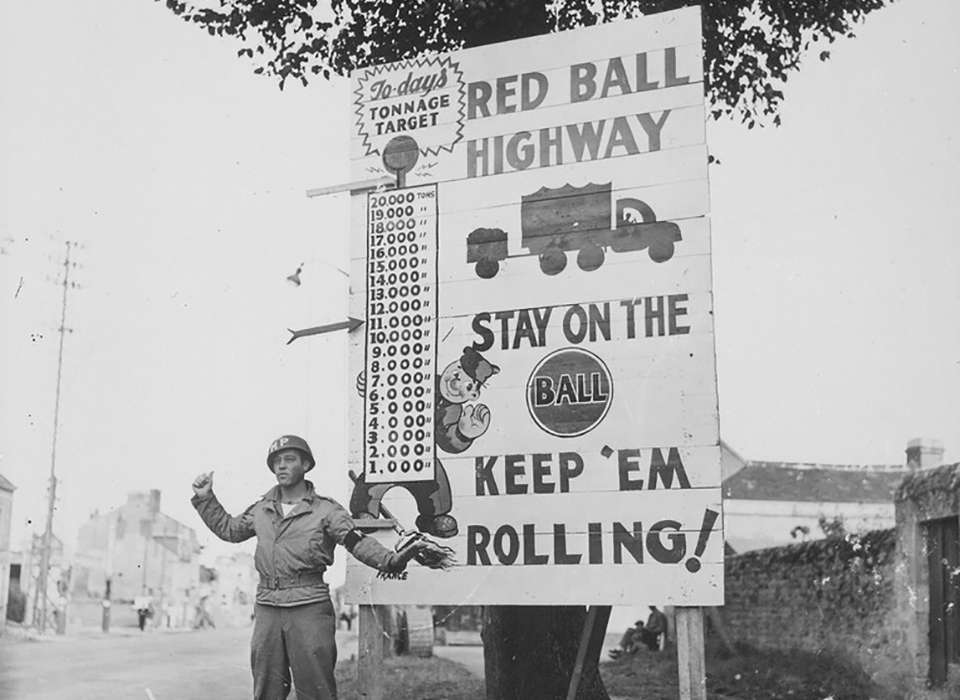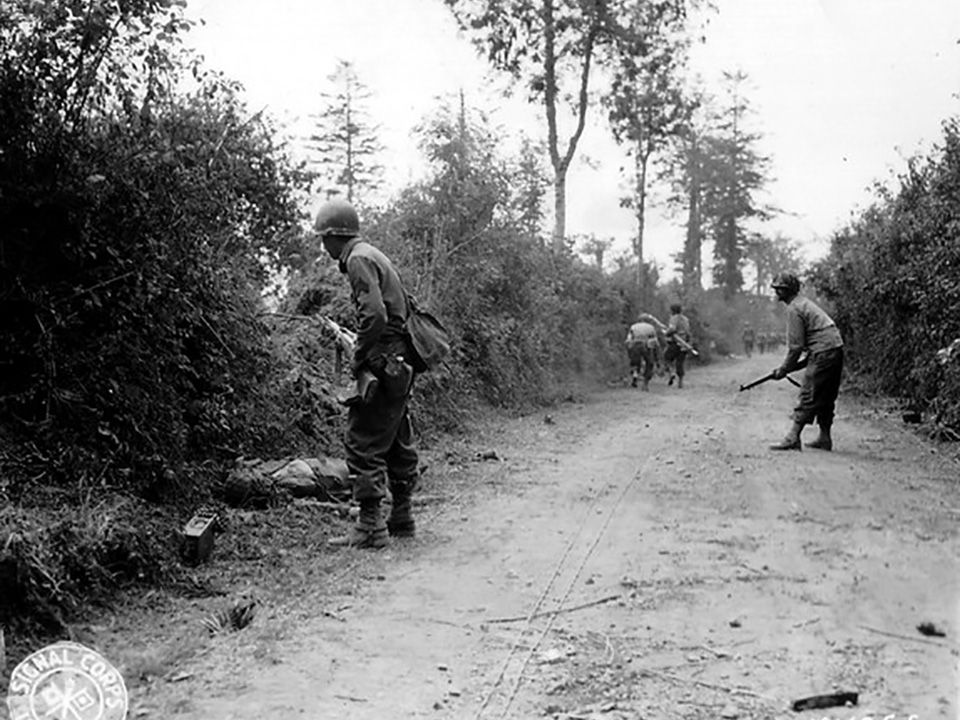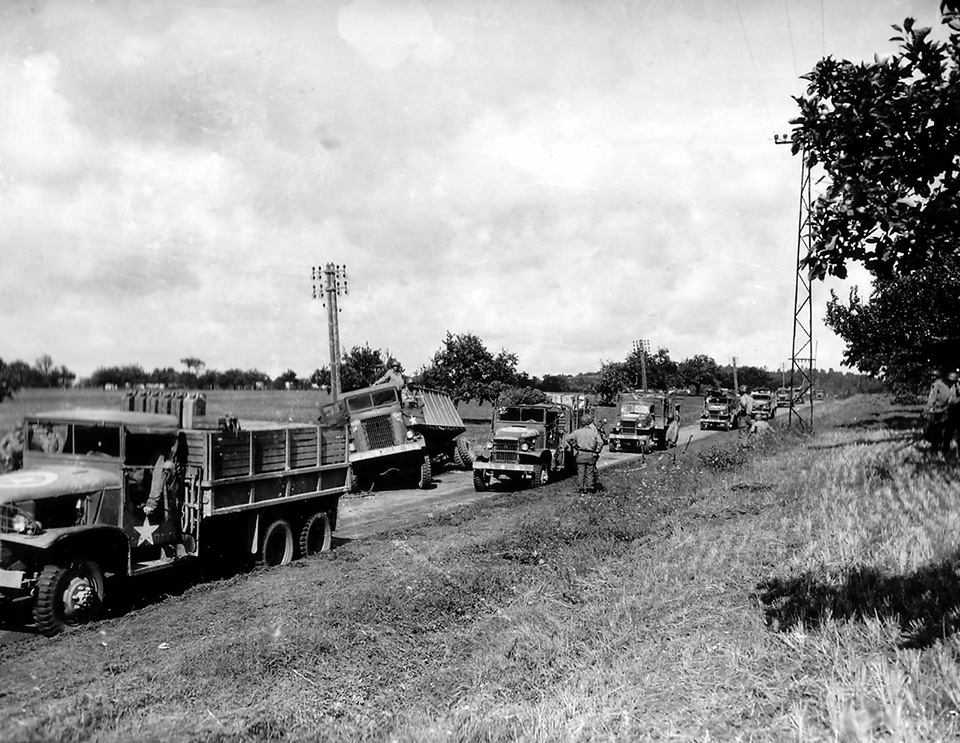Top Image: Corporal Charles H. Johnson of the 783rd Military Police Battalion, waves on a "Red Ball Express" convoy. Courtesy National Archives.
After the Allied invasion of Normandy on June 6, 1944, American, British, and Canadian forces struggled to first expand and then break out from their newly acquired beachhead. By the middle of July, more than one million Allied soldiers were ashore in France, but they were confined to a lodgment only 50 miles wide and 20 miles deep, about half the size of Long Island. After the launch of Operation Cobra on July 25, American infantry and armored units finally escaped the labyrinth of Normandy hedgerows and burst onto the open fields of central France. Following the breakout, elements of the US Third Army under General George S. Patton Jr. often covered more than 80 miles a week. While the campaign forced the German Army to retreat across France, it also caused serious supply problems for the Allies.
While Allied forces liberated Paris and much of northern France by the end of August, they failed to capture the deep water port of Antwerp in Belgium until November 8, 1944. When the Allies finally did capture Antwerp, the Germans had damaged the port to such a degree that it could not be used to unload ships until the end of November. Moreover, Allied bombers had successfully prevented Germany from taking advantage of the French rail system by destroying many of the bridges, steam engines, and marshalling yards in France. Unfortunately, this also meant that the Allies could not utilize French railroads to move supplies across the country. Most of the fuel, food, and ammunition needed to support the growing Allied armies, therefore, had to be unloaded at the French port of Cherbourg and transported by truck over narrow country roads to the American supply dumps in the Chartres—La Loupe—Dreux triangle.
The solution American commanders devised was to create a “Red Ball” truck route, named after the red dots commonly used to indicate priority express trains in the United States. Brigadier General Ewart G. Plank implemented the convoy system, which used Army trucks in a nonstop loop to carry rations, gasoline, ammunition, and other vital supplies to troops at the front. Upon forming the Red Ball Express, General Plank declared, “Let it never be said that [a lack of supplies] stopped Patton when the Germans couldn’t.”
The convoy system went into operation on August 21, 1944, with more than 6,000 trucks. Seventy-five percent of Red Ball Express drivers were African American servicemen. Not all of these men were trained as truck drivers, but the emergency saw them pressed into this new role. Most of the men were under the age of 24, and few had experience driving trucks before the war.
Red Ball Express drivers often worked in two-man teams to make the 54-hour round trip from Cherbourg to Chartres. The trucks drove on one way roads reserved exclusively for their convoys. Military policemen guarded the intersections to guarantee the trucks did not have to stop for anything. The original plan for the Red Ball Express called for trucks to drive at 25 miles per hour at 60 yard intervals in convoys escorted by jeeps. In reality, the trucks often traveled alone, leaving Cherbourg as soon as they were loaded and racing at speeds exceeding 60 miles per hour to the forward supply depots despite blackout conditions. Accidents, fatigue, and enemy aircraft were just some of the hazards drivers confronted on their route.
At any given time during the operation, an average of 900 vehicles were on the road. They delivered an estimated 12,000 tons of supplies per day for 82 days. By the end of November, when the Red Ball Express was discontinued, its drivers had transported more than 412,000 tons of fuel, ammunition, and equipment to 28 different divisions. The Red Ball Express was so successful, in fact, that several other similar convoy systems were established throughout France when the need arose.
After the port of Antwerp opened, the drivers of the Red Ball Express returned to their respective units. However, their accomplishments were well publicized by the Army and even served as the basis for a 1952 movie of the same name. Time called the Red Ball Express part of “The Miracle of Supply” that sustained American forces thousands of miles from North America. Time went on to declare that “this miracle was in the American tradition, a tradition the Germans have never really understood. It was begotten of a people accustomed to great spaces, to transcontinental railways, to nationwide trucking chains, to endless roads and millions of automobiles.” Indeed, the US Army was the most mechanized military in the world in 1944, while the German Army still relied heavily on horses for transportation. But the Red Ball Express also succeeded because of the devotion to duty of thousands of African Americans who had been denied the full benefits of American citizenship but who were committed to doing their part to win the war.

African American Sailor Charles Walter David Jr. Gave His Life to Save Fellow Americans
Coast Guardsman Charles Walter David Jr. volunteered to rescue sailors from the doomed USAT Dorchester and also saved the lives of two of his own shipmates.
Tyler Bamford
Tyler Bamford was the Sherry and Alan Leventhal Research Fellow at the Institute for the Study of War and Democracy at The National WWII Museum from 2019-2021. He obtained his PhD in history from Temple University and his BA in history from Lafayette College.
Cite this article:
MLA Citation:
APA Citation:
Chicago Style Citation:








![Max Fuchs, New York City cantor, sings as Rabbi Sydney [sic] Lefkowitz, Richmond, VA, conducts the first Jewish services from Germany.](/sites/default/files/styles/max_650x650/public/2025-10/image1.jpg)


